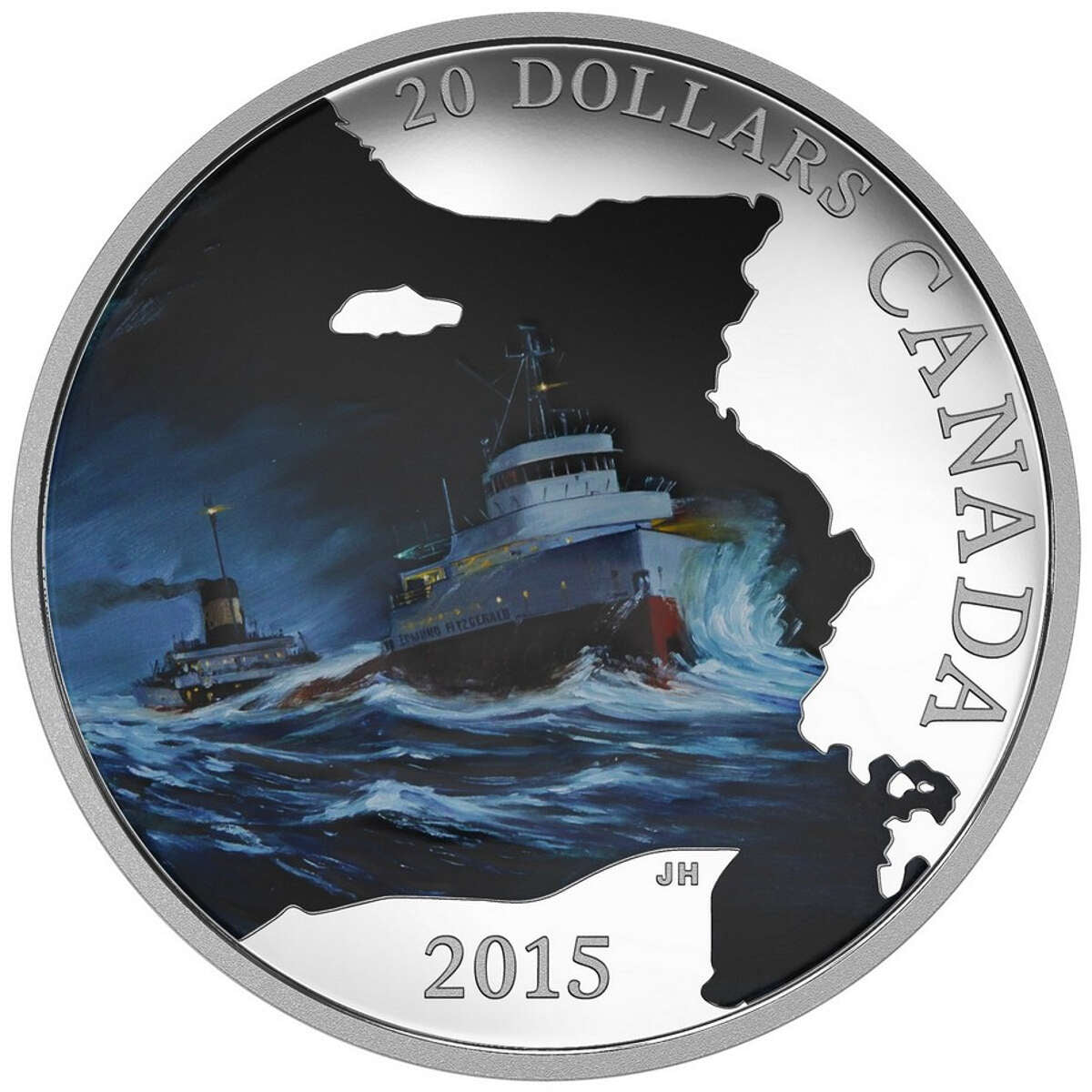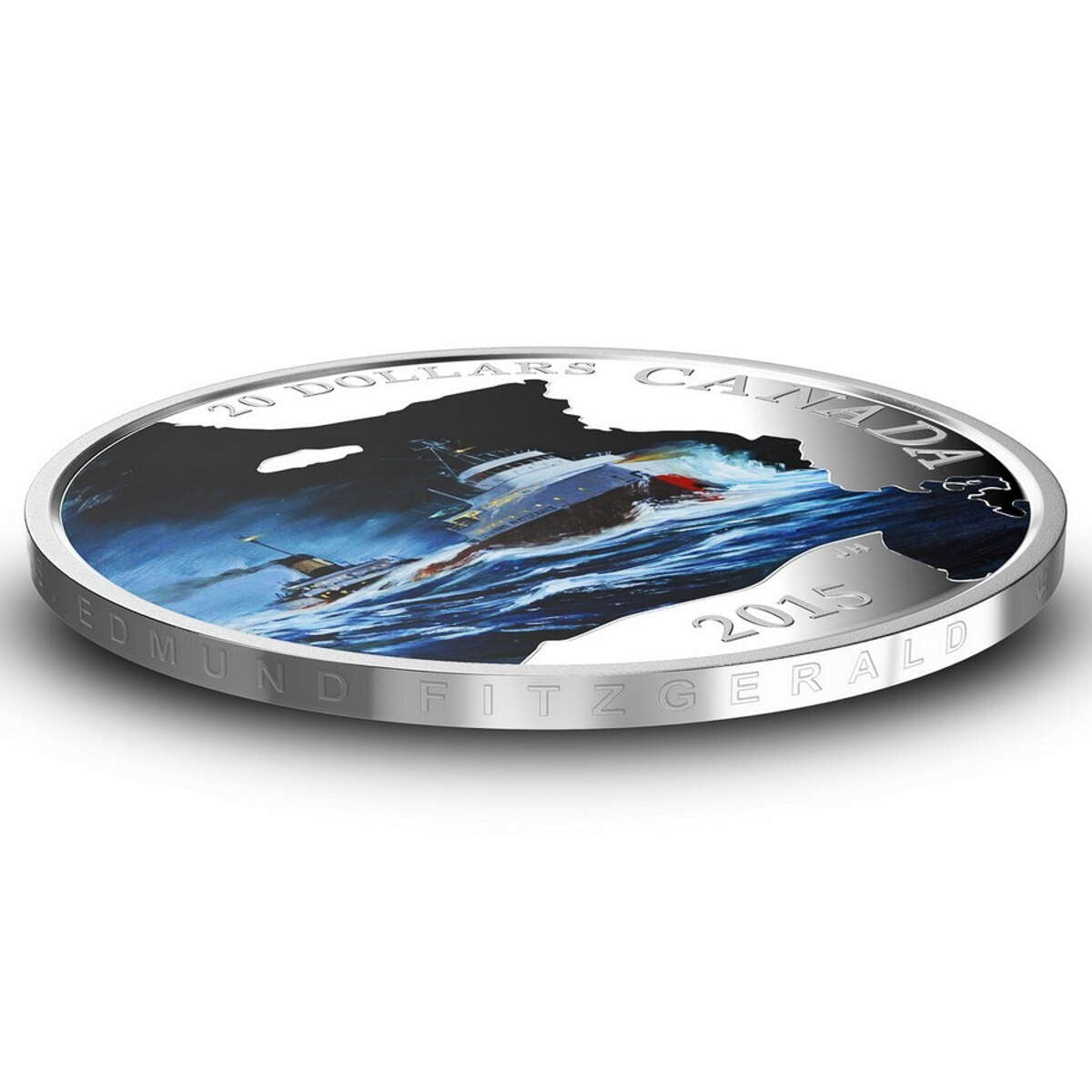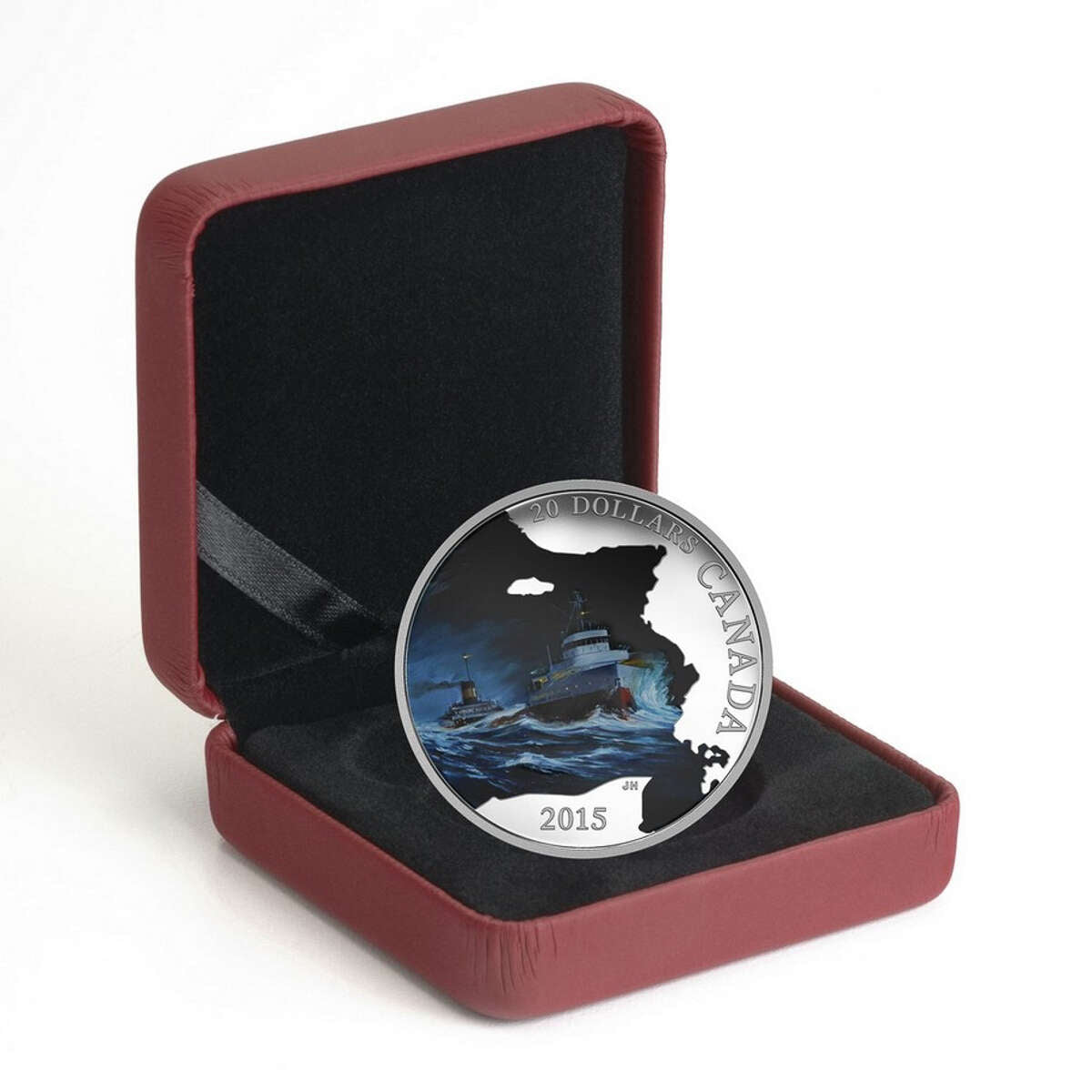Description
This 2015 $20 pure silver coin marks the 40th anniversary of the loss of the ship the Edmund Fitzgerald, and is part of a series that recalls well-known vessels lost in Canadian waters. The loss of the Edmund Fitzgerald in 1975 quickly grew to represent the great risks still taken by the crews of modern ships, and inspired Gordon Lightfoot to write his legendary folk song “The Wreck of the Edmund Fitzgerald”. The coin combines selective colour, an artistic design, edge lettering, and an extremely low mintage of just 7,000 coins. The coin weighs just over one ounce of pure silver. As a pure silver coin struck by the Royal Canadian Mint, this item is HST/GST exempt.
The Design:
The reverse design by Canadian artist John Horton uses colour over detailed engraving to recreate the marine conditions of that fateful evening in 1975 as the S.S. Edmund Fitzgerald struggles in its quest to beat the fearsome winter storm on Lake Superior. Waves can be seen crashing against the Fitzgerald’s red and white bow and sweeping across the deck of the cargo-laden freighter. Framing this dramatic scene is the engraved outline of the Canadian shoreline of southeastern Lake Superior.
The edge lettering on this commemorative coin displays the words “S.S. EDMUND FITZGERALD” and an outline of the ship’s anchor. The coin is engraved with the word “Canada”, and the date “2015”.
The S.S. Edmund Fitzgerald:
The Fitzgerald cleared Superior, Wisconsin, on her last trip on November 9, 1975, with a cargo of 26,116 tons of iron ore heading to Detroit. Traveling down Lake Superior, she encountered a November gale that raised huge waves and whipped the heavily laden ship about until she started to take on water. About 17 miles from the entrance to Whitefish Bay, the ship foundered and was lost forever to the unpredictable waters of Lake Superior.
Captain McSorley had indicated he was having difficulty and was taking on water. She was listing to port and had two of three ballast pumps working. She had lost her radar and damage was noted to ballast tank vent pipes. All 29 officers and crew went down with the ship, which lies broken in two sections in 530 feet of water. The wreckage consisted of an upright bow section, approximately 275 feet long and an inverted stern section, about 253 feet long, and a debris field comprised of the rest of the hull in between. Both sections lie within 170 feet of each other.
The National Transportation Safety Board voted unanimously on March 23, 1978 to reject the U. S. Coast Guard's official report supporting the theory of faulty hatches. Later the N.T.S.B. revised its verdict and reached a majority vote to agree that the sinking was caused by taking on water through one or more hatch covers damaged by the impact of heavy seas over her deck. This is contrary to the Lake Carriers Association's contention that her foundering was caused by flooding through bottom and ballast tank damage resulting from bottoming on the Six Fathom Shoal between Caribou and Michipicoten Islands.







